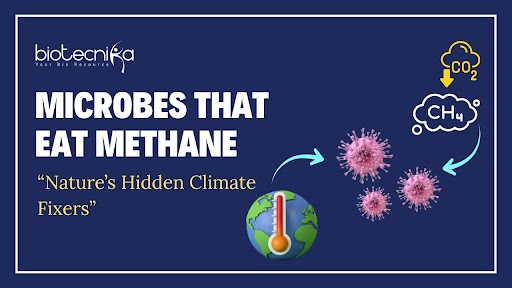From Seafloor to Science Labs: The Hunt for Microbes That Could Save Earth
Fifty miles off the Tuscan coast, where the Mediterranean looks like a sheet of liquid sapphire, something bizarre is happening under the waves. Forget sunbathers, yachts, and beach clubs, this corner of the Tyrrhenian Sea is crawling with ancient creatures that could become unlikely heroes in the fight against climate change.
These creatures aren’t sharks or sea monsters. They’re microbes, a tiny, methane-guzzling organisms that thrive where no human would dare to live. Using microbes that eat methane suggests a promising solution to climate issues.
Their favourite snack? Methane is a greenhouse gas far more potent than carbon dioxide. While the rest of us struggle to reduce emissions, these microscopic organisms have been quietly inhaling the substance for billions of years.
And now, scientists are racing to recruit them.
The Island of Exploding Gas
The drama begins near Montecristo, a real-life island made famous in novels but feared by sailors for its jagged, forbidding cliffs. In 2017, fishermen nearby witnessed a terrifying sight: a 30-foot jet of filthy water erupting from the sea. The culprit? A chain of underwater mud volcanoes belching methane straight into the Mediterranean. This unexpected release of methane becomes a feast for microbes that eat it.
Enter microbiologist Dr. Braden Tierney and his team, who decided this volatile site was the perfect hunting ground. On a moonlit night this summer, they set sail, hearts pounding at the thought of floating above a spot that had erupted violently less than a decade ago.
What they found was the stuff of science tabloids: purple blobs stuck to rocks, oozing like alien chewing gum. Microbes, mucus-like mats, even sand that jiggled like dessert, all alive with methane-eating potential. “Let’s make sure we get as much of the goop as possible,” Dr. Tierney reportedly said as he scooped a blob into a sample bag.
The Climate’s Tiny Bodyguards
Why the excitement over goop? These methanotrophs (the scientific name for methane-eaters) already play an invisible but vital role in Earth’s atmosphere. They consume many times the methane that humans release. Without them, our planet might already be hotter than it is today.
But the big question is whether we can train them to do more—gobbling up methane leaking from oil wells, bubbling out of landfills, or escaping from cow pastures. Microbes that specialize in eating methane could transform these emissions into less harmful substances.
One start-up in California, Windfall Bio, is already experimenting with these microbes to transform methane into fertilizer. Their wildest idea? Spraying them onto cardboard shipping boxes, so the boxes absorb methane while traveling the globe.
Science on a Shoestring
Back in Italy, Tierney’s team collected 43 samples and rushed them back not to a high-tech lab, but to their Airbnb. Samples sat next to croissants in the fridge. A bedroom doubled as a makeshift laboratory sauna. Once processed, the microbes were shipped off to Colorado for further study.
Among the discoveries: a surprising partnership between algae and bacteria that use both sunlight and methane to grow. This combination could one day be unleashed in rice fields, a notorious source of methane, and researchers believe these are microbes that effectively eat methane.
The Road Ahead
For now, the microbes remain mysterious and stubborn. Some die instantly when exposed to oxygen. Others need elaborate partnerships to survive. But the hunt is far from over. The Two Frontiers Project, the nonprofit behind these expeditions, is targeting new methane hotspots, ranging from Japan to Namibia. Uncovering more microbes that consume methane could be a game-changer.
It’s a reminder that sometimes the answers to our most significant problems lie in the smallest forms of life. Purple blobs at the bottom of the sea might not look glamorous, but they could become the unexpected climate warriors of our time.


























